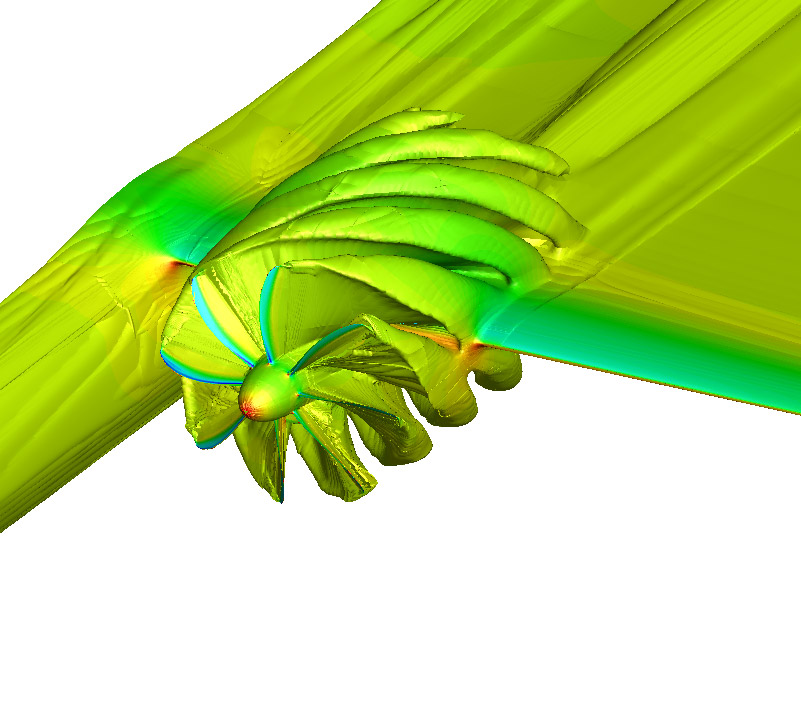Analysis of Propeller Acoustics
Research in propeller acoustics is fuelled by the need for transport aircraft with low impact on airport and community noise and high propulsive efficiency. In this project Computational Fluid Dynamics is used as a tool for comparing the acoustics of different propeller designs revealing differences in tone noise as a result of modifying the arrangement of the blades on the rotor hub as well as modifying the blade shape. The effect of having a propeller installed on an aircraft is also investigated.
This work is part of the IMPACTA project of GE-DOWTY that provided the propeller designs.
Method
The method used is the HMB solver developed by the CFD lab at the University of Liverpool. A number of methods are used including RANS, URANS and SAS. Proudman's method for turbulent noise is also employed. ICEMCFD developed by ANSYS is used to build the multiblock grid-topology and mesh.
Tecplot, also developed by ANSYS, is used as the visualisation tool.
Recent Results
The figure below shows the baseline blade and hub installed on the port side of the aircraft. The flow solution is at 50 degrees of azimuth into the 3rd revolution.
